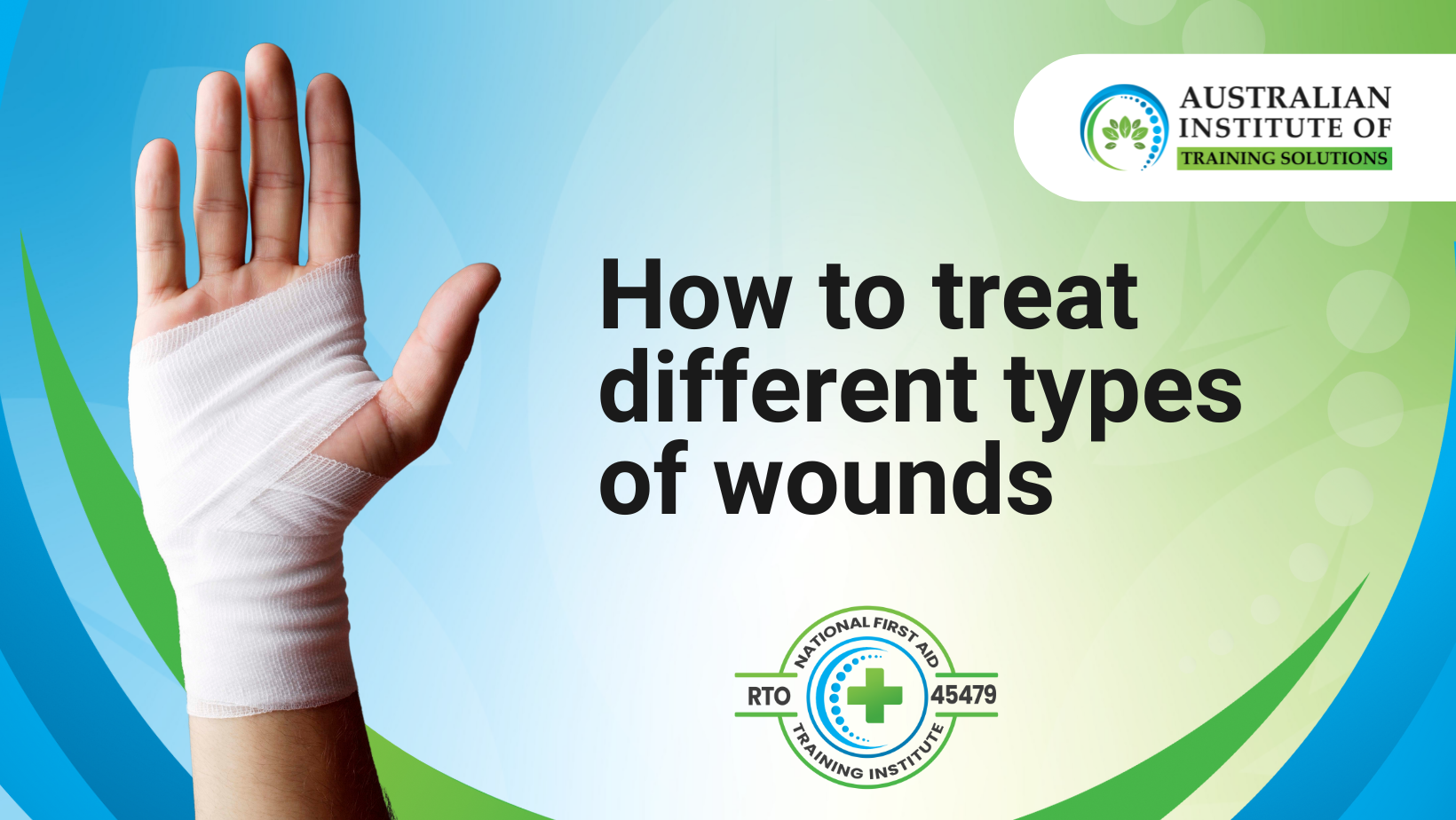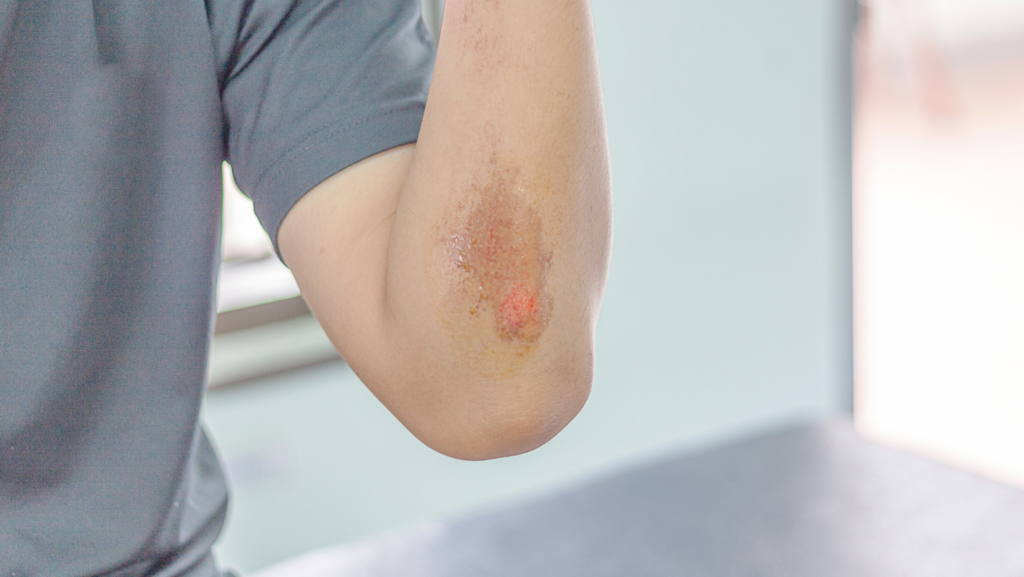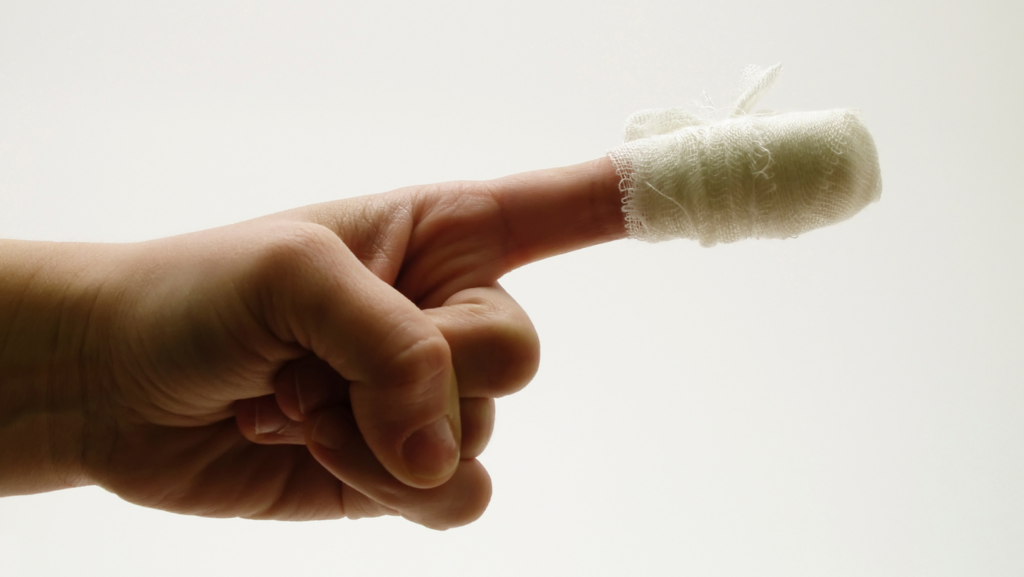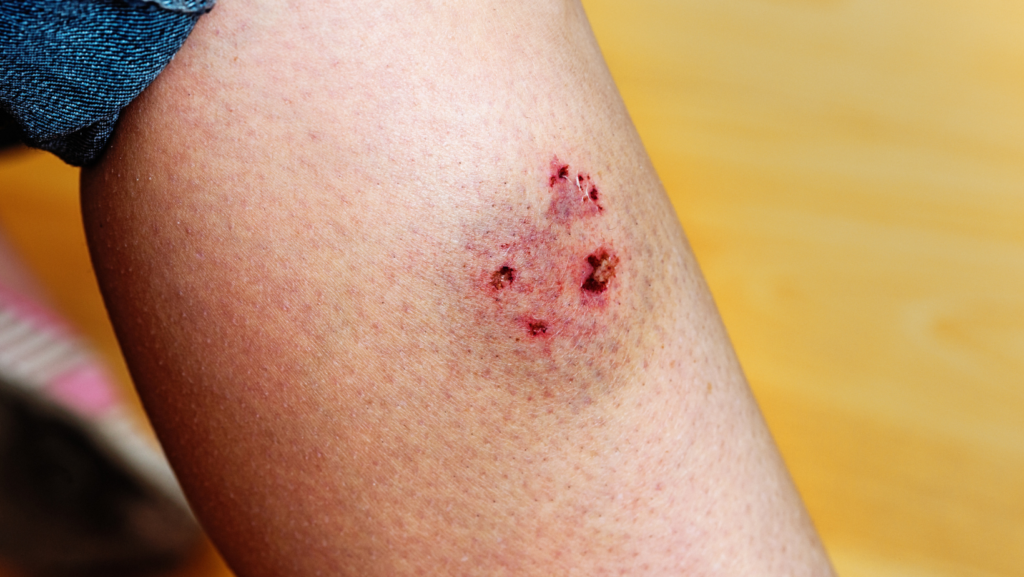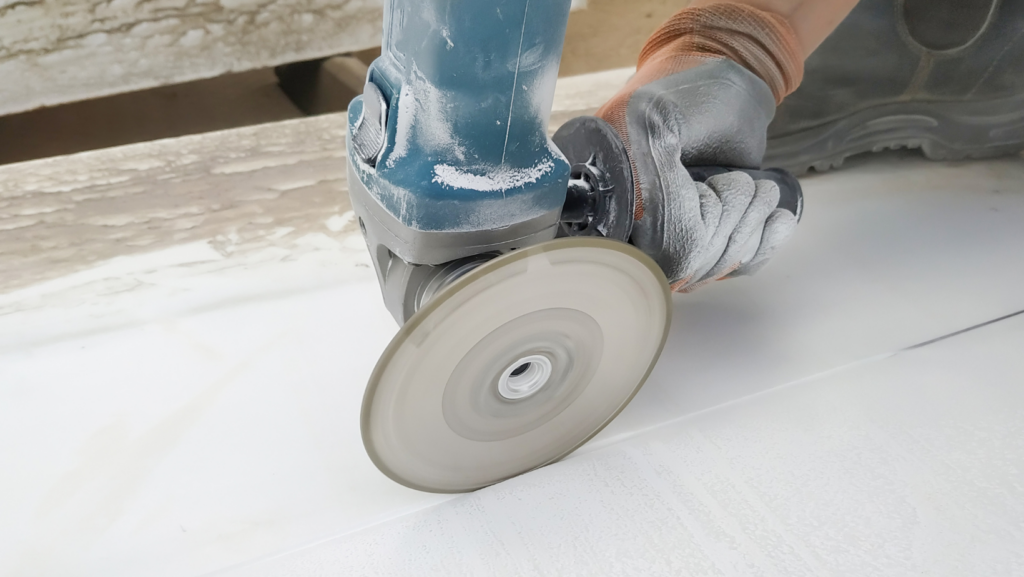As we go about our everyday life, we can acquire different types of wounds – from surface level grazes to bone deep cuts. However, each wound requires different care.
Our First Aid courses in South Perth teach you the skills to act confidently in emergencies. Learn more about wound care, the different types of wounds, and how basic First Aid training can empower you to make a difference.
Book your HLTAID011 Provide First Aid & CPR course today and be prepared to save a life.
If you’re unfamiliar with the different types of wounds and how to best treat them, keep reading.
Types of wounds
There are four types of wounds an individual can acquire, each of which require basic First Aid training to treat:
- Abrasions – these are scrapes that affect the outer layer of skin.
- Lacerations – these types of cuts can vary in depth and may involve deeper tissue damage which can affect muscles and nerves.
- Puncture wounds – these types of wounds are deep and narrow, caused by sharp objects and carry a risk of infection.
- Avulsions – this is a partial or complete tearing away of skin.
What causes abrasions?
Abrasions are caused by everyday scrapes and bumps, and are particularly common among active, young children doing outdoor play or adults doing extreme sports.
They are the most common type of wound you’re bound to encounter and an accredited First Aid training course can teach you the essential skills to treat an abrasion.
Examples of how one may acquire an abrasion include:
- Road rashes caused by a cyclist or skateboarder falling onto the pavement.
- A knee scape caused by tripping while running.
- A forearm abrasion caused by moving wooden planks at work.
- Getting scratched by a cat while playing with it.
Treating abrasions
Abrasions come with minimal bleeding and pain but should still be treated with basic First Aid techniques to avoid infection (especially if they are large).
To treat an abrasion, run the wound under running water or a saline solution, then gently pat dry. Apply an antiseptic cream before covering with a sterile dressing or adhesive bandage and remember to change the dressing each day.
What causes lacerations?
These cuts can go as deep as to the bone, so severity may vary. They’re more commonly caused during higher risk activities such as cooking or using workplace equipment.
A First Aid refresher course can help you feel confident to treat lacerations at work or around the home.
Examples of how one may acquire a laceration include:
- Slicing your finger while cooking in the kitchen.
- Getting a cut on your hand while operating a saw at work.
- Falling against a piece of broken glass.
Treating lacerations
Before treating a laceration, first ensure all bleeding is controlled and apply pressure if needed using a clean cloth or sterile dressing.
Once bleeding is controlled, clean the wound under running water or with a saline solution, apply antiseptic, and cover with a sterile dressing or adhesive bandage. Remember to monitor the wound for infection and change the dressing daily.
What causes puncture wounds?
A puncture wound may just as easily be acquired in a number of scenarios—while out on a leisurely walk or while conducting workplace duties.
Due to their nature, they can pose risk of infection, and if not treated in time can lead to loss of limb and even life-threatening consequences.
It’s especially important to know how to treat puncture wounds properly, and an accredited First Aid training course will ensure you’re equipped with the essential skills and knowledge to prevent further damage.
Examples of how one may acquire a puncture wound include:
- Stepping on a rusty nail.
- Accidentally puncturing yourself with a needle or syringe.
- Getting bitten by a dog.
- Cleaning up broken glass and getting a shard in your hand.
- Reaching over a barbed wire fence and getting punctured.
- Getting a splinter in your foot.
Treating puncture wounds
Before treating a puncture wound, first ensure all bleeding is controlled and apply pressure if needed using a clean cloth or sterile dressing.
Once bleeding is controlled, clean the wound under running water for at least 5 – 10 minutes to ensure all dirt and debris is removed. Inspect the wound to ensure nothing foreign remains (and if something is lodged inside, seek medical help).
Once clear, apply antiseptic, and cover with a sterile dressing or adhesive bandage. Remember to monitor the wound for infection and change the dressing daily.
What causes avulsions?
Avulsions often require surgery to repair, so it’s vital to call Triple Zero (000) immediately.
Having life-saving First Aid training is still incredibly valuable in this scenario as it can help you reduce any blood loss and manage symptoms of shock until emergency services arrive.
Examples of how one may acquire an avulsion include:
- Tripping in open toed shoes
- Chopping food
- Falling from a height
- Trauma based accidents (e.g. machinery accident)
Treating avulsions
Caring for avulsions should be done with care since the severity of the wound will vary.
For example, in some major situations, a chunk of bone may be detached from the rest of the bone. In other situations, nerves maybe be detached, or limbs may be separated from the rest of the body.
For less severe avulsions, you may notice layers of skin are gone from the wound area, leaving only muscle, fat or bone visible (e.g. the tip of a finger or toe being cut or torn off).
These wounds should still be treated with great care, and while smaller injuries can be treated at home with basic First Aid training, larger wounds will require stitches, surgery, or a skin graft. Remember to call Triple Zero (000) immediately for expert guidance on what to do.
Learn lifesaving skills
In our First Aid course at the Australian Institute of Training Solutions, not only do we walk you through these treatment scenarios, but we’ll also teach you about different types of dressings and bandage techniques suitable for various situations.
Enrol in First Aid and learn the life-saving skills that will help you step up in an emergency. Head to www.aits.edu.au/course/HLTAID011-First-Aid to book online today!














